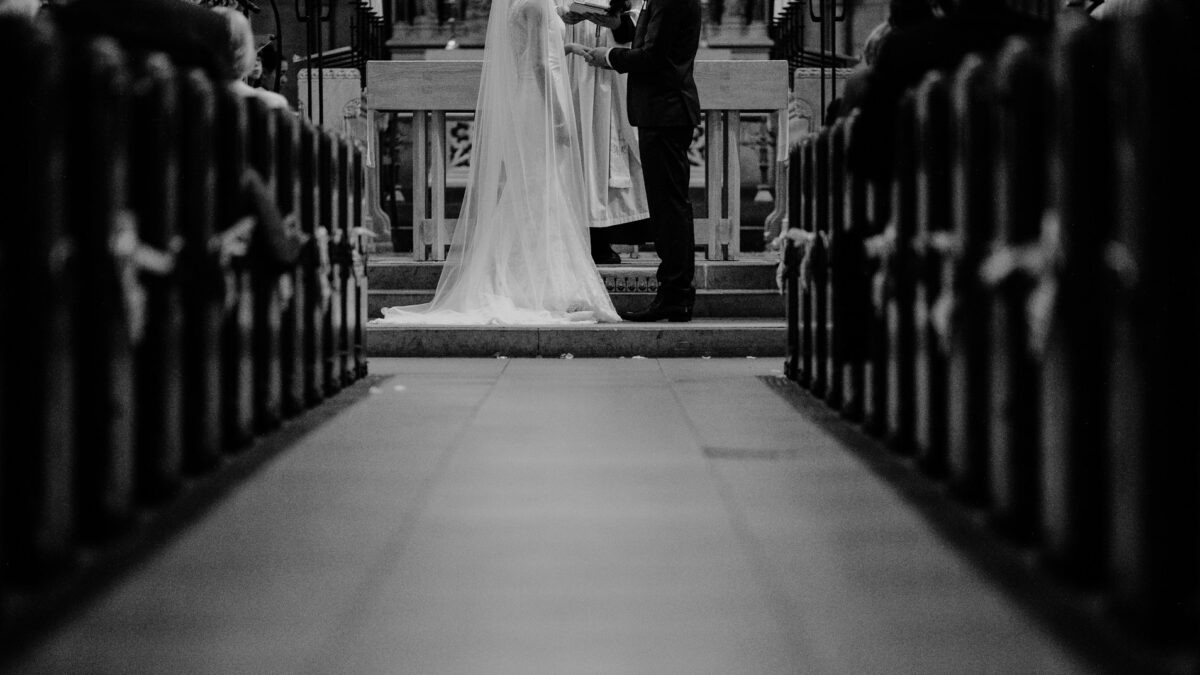
New York Times columnist Charles Blow notes that, among adults, married people will soon be a minority in the United States. Blow is fine with this, so he argues for further weakening the incentives to marry. He got some of the facts wrong, but the details matter less than his example of ruling class apathy, or even antipathy, toward marriage.
Marriage is on the rocks in America, and redefining it only seems to be hastening its decline. The redefinition of marriage has not stopped with same-sex relationships. After winning that fight, The New York Times has been enthusiastically pushing polyamory. This means polygamy is back, baby! All it needed was a quick makeover. America’s elite are happy to embrace polygamy—so long as it is relabeled as polyamory and waves the rainbow flag.
This effort is having an effect. Just look at Cambridge, Massachusetts, where the local government voted to recognize domestic partnerships of three or more people. This is not some obscure hippie hamlet, but the home of Harvard University, and the law was developed with the help of the Harvard Law School LGBTQ+ Advocacy Clinic. As coal-mine canaries go, this is a big bird.
All this indicates yet again that the social conservative Cassandras were right in their predictions. During the same-sex marriage debates, LGBT activists professed outrage at the suggestion that polygamy might be next. Now, less than a decade later, they are vigorously pushing us down the slippery slope they insisted didn’t exist. Rod Dreher’s law of merited impossibility has an obvious corollary: “That will never happen, and it will be awesome when it does.”
The sexual revolution’s redefinition of family was never going to stop with same-sex marriage, but few on the left have had the courage to say no to the expansion of the alphabet agenda. People who insisted same-sex marriage would have no effect on the rest of us now want to punish dissenters who don’t want to promote and celebrate same-sex weddings. People who declared this was about consenting adults are now all-in on the LGBT youth agenda, from child drag queens to transgender toddlers.
Americans were promised that LGBT rights were about letting Ellen get married and being nice to Bruce when he wanted to be Caitlyn. Thus, the radical bait-and-switch provides political opportunities for Republicans, if they have the courage to take on the ideologues who control our institutions, from the corporate media to Wall Street. Sen. Tom Cotton, for one, has risen to the challenge by introducing a bill to prohibit schools from concealing children’s gender confusion and transition from parents.
Conservatives can and should run on these issues. But the entrenched powers of our culture are against us, as the embrace of polygamy (sorry, polyamory) in Harvard’s hometown shows. The culture they promote and sustain is anti-marriage, anti-family, and especially anti-child.
Their rolling redefinition of marriage is not rooted in veneration of marriage. After all, advocates for same-sex marriage did not want to make it harder to divorce, and those pushing recognition for poly relationships certainly do not. Rather, they want official recognition for any and all adult romantic relationships and the on-demand dissolution of the same.
This is a consumer model of marriage, in which marriage is an optional capstone to life and a relationship (or, for the polyamorous, relationships). This attitude is bound up in a culture and an economy that are ordered toward adult liberation and indulgence.
Marriage is being remade to fit a culture that encourages people to live as atomized consumers cut off from the past and with no stake in the future. These changes to our understanding of marriage naturally make it seem less important, and unworthy of special status or consideration.
In this view, marriage is a lifestyle choice that can be abandoned at will. But marriage rightly understood is much more. It unites the two halves of the human race into a whole that bridges humanity’s past and future. This requires that marriage be durable, rather than disposable. A society that is not organized to support this kind of marriage is a society that is against children, whatever it might say.
And this is what we see in our culture, where what is best for children is routinely sacrificed to adult desires, interests and fears. Examples are legion, from immense deficit spending to the masking of toddlers to a sexual culture that prioritizes adult indulgence over children’s needs for stable homes with a mother and father. Also, of course, there is the horror of abortion.
Indeed, our nation’s ruling class increasingly displays an anti-natal misanthropy that sees past generations as irredeemably wicked and future generations as a burden. Environmental activists, for example, talk less about the need to protect the planet for future generations than the need to protect it from future generations. These ideas are trickling down, as illustrated in a recent piece by Suzy Weiss on young women who are choosing to be sterilized to ensure that they never have children.
This does illuminate a difference between the traditional practice of polygamy and the fashionable promotion of polyamory. The former encourages powerful men to hoard reproductive opportunities; the latter favors sterility. The old polygamy may cause problems for the long-term stability of a society if too many men are unable to find wives; modern polyamory has no interest in the long-term, for it is all about today.
This transience may suit the interests of the powerful in culture, politics, and finance, but though they can encourage and glamorize this way of life, it remains antithetical to human flourishing. That is best served by stable homes founded on the natural family of a mother, a father, and their children.









